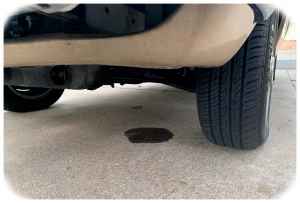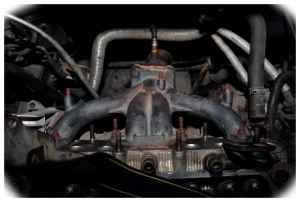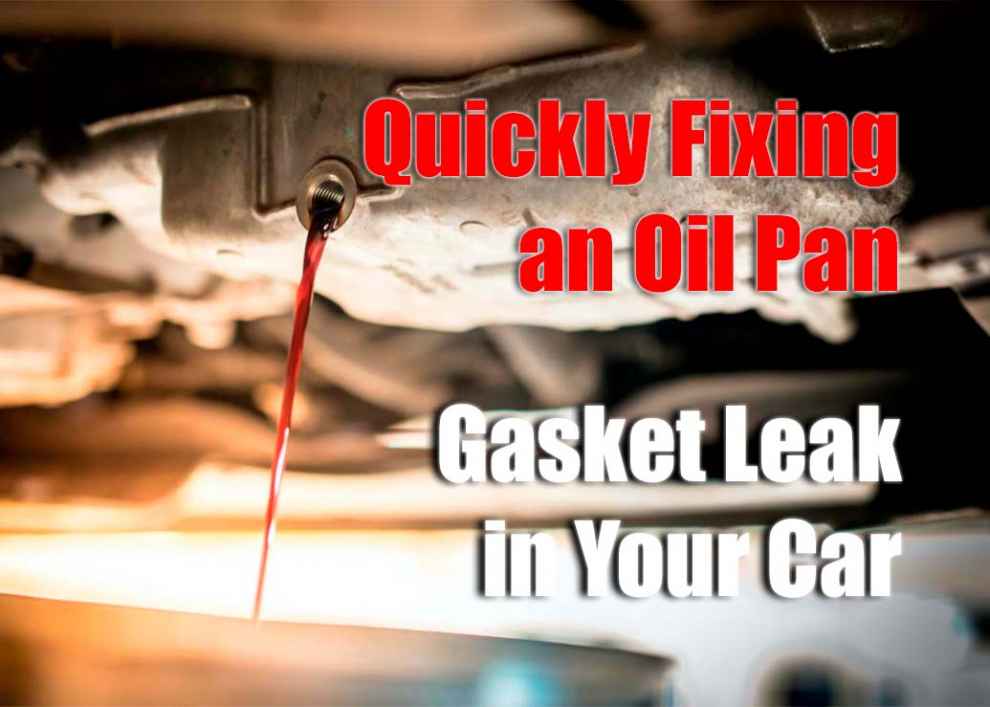An oil pan gasket leak is a common occurrence in cars and can be caused by various factors, including age, wear, and tear, or temperature changes. This type of leak is especially dangerous because it can cause serious engine damage if left untreated. It’s important to fix an oil pan gasket leak immediately to prevent further damage and avoid costly repairs.
Identifying an Oil Pan Gasket Leak

Tools Needed For The Job
Before beginning the repair, you will need to gather the following tools:
- An oil drain pan
- A wrench set
- A ratchet and socket set
- A screwdriver set
- Gasket sealant
Optional tools that can make the job easier include an impact wrench and torque wrench.
Preparing the Vehicle
Before beginning any repair job on your car it’s important to take some safety precautions: make sure to wear safety goggles and gloves at all times; jack up the vehicle using jack stands for extra security; disconnect the battery before working on any electrical components; and place wheel chocks around all four tires to prevent it from rolling away. Once these steps have been taken, you are ready to remove the oil pan. Also, read how to check engine oil to ensure your vehicle maintains optimal performance and longevity.
Removing The Oil Pan
The first step in repairing an oil pan gasket leak is to remove the oil pan itself. This can be done by unplugging any electrical connections attached to it, then remove all of its bolts with a ratchet or wrench, depending on their size, finally use a screwdriver or other tool to pry off the old gasket from its mating surfaces. Remember that some of these bolts may be extremely tight, so be prepared with the correct tools and patience.
Removing the Old Gasket
Once all bolts are removed, the oil pan can be removed and set aside. The next step is to remove the old gasket from its mating surfaces. This can be done by using a razor blade or putty knife to scrape away any remaining pieces of gasket material; then, use a wire brush to clean off any debris that may have been left behind. If there is still some stubborn gasket material, you can use an aerosol lubricant like WD-40 to help loosen it up before attempting to scrape it away.
Installing the New Gasket

Reassembling The Oil Pan
Once the new gasket has been securely fastened in place, it’s time to reassemble the oil pan. Begin by reinstalling any electrical connections that were disconnected earlier; then, use a wrench or ratchet to attach all of the bolts back into their original locations, making sure to torque them down properly according to the manufacturer’s recommended values. Finally, reconnect the battery, and you are all done!
Testing For Leaks
Before taking your car for a test drive, it is important to check for any leaks that may have occurred during installation. This can be done through visual inspection or by placing some rags underneath where the oil pan was located and running the engine for a few minutes before shutting it off and checking again. If no leaks are present after this test, your repair job was successful!
Conclusion
Fixing an oil pan gasket leak is an easy task that can be completed at home without taking your car to a mechanic. With just a few simple tools and some mechanical know-how, you can ensure that your car is safe and secure from future leaks while avoiding costly repairs.

Add Comment